The 50 States Project is a yearlong series of candid conversations with interior designers we admire, state by state. Today, we’re chatting with Laura Hodges, founder of her Catonsville, Maryland–based design studio and retail shop, about how going into business with her husband changed her (work and home) life, the challenges of sustainable sourcing, and why she goes green whether or not clients ask her to.
You had an installation this week—was it your first post-coronavirus install, and how did it go?
Surprisingly, it was our second in two weeks. It was a little nuts. One of the projects was supposed to have wrapped up in January and the other in February. Obviously it’s hard to do an installation [now] with everybody wearing masks and trying to keep 6 feet apart.
As those projects did get delayed, what has been the reality of wrapping them up in the last two months?
For both projects, it was natural delays—which, under normal circumstances, wouldn’t be such a big deal. We redid the stairs and built a whole wall with windows inside this loft space, and there were various structural parts that were taking longer than expected, so things kept getting pushed back. In March, we started to think, How’s this going to work? For the custom staircase, for instance, it was a fourth-floor loft space and the installers were bringing in the massive stringers with a crane. It was a big thing—not like they were just delivering a sofa. It involved a lot of people who really couldn’t be 6 feet from one another.
What have the regulations been like in Maryland?
Maryland has been pretty strict about sheltering in place. Yes, construction is essential, but the metal shop shut down for two weeks. It was challenging because the contractors are all considered essential, so they just kept going, but we were like, “Well, we’re not essential.” It was hard to keep up! I couldn’t come out to the job site and do all the stuff I would normally do.
We did FaceTime as much as possible, but not everybody’s on board with that way of doing things. It means asking builders to get on a FaceTime calls with us as we go, “Show me what that baseboard looks like!” We had to explain to our clients, “We’re doing the best that we can, but we have to be safe.” We’re very happy to have the work and to keep going, but it became challenging. We’re trying to run a business, but you don’t know when it’s all going to end.
Right—what counts as ‘essential’ can be so vague.
Like, do I just leave that custom table I ordered with the maker in Baltimore for the next year until they find a vaccine, and then I’ll look at it? I [ended up going to see it] with a mask, and I’m glad I did, because this is expensive furniture that I want to be a certain way and I was able to make some adjustments in person—but at the same time, it’s not essential.
Has your mindset changed in the past eight weeks?
For sure. It started off like, We all have to be super safe, we have to stay in our homes and not do anything, it’s not worth it. I have two young boys and I don’t want them getting sick, and of course we’re just trying to be responsible for our employees by doing the right thing. And then at some point, you’re like, Well, this is not going to reasonably change anytime soon. So are we just going to sit here in our houses and not do anything?
A lot of the work that we do is totally remote. But I’m used to going to my project sites at least once a week, because they’re [usually] all within an hour’s distance. Mistakes can be made, people can misinterpret your design—there are all kinds of things that you could avoid if you actually were there. At that point, I started thinking of it more as, What can we do safely, keeping in mind that this is probably going to go on for a very long time? We’re going to have to make sure the furniture’s right, move it in, and make sure the electrician put the light in the right spot.
We wear masks and gloves, we have 8 million things of hand sanitizer, we don’t touch anything unless we have to, and we’re washing our hands. You can’t control what other people are going to do, though. So we just do our best with our own company to maintain our own standards for how we’re going to do things.
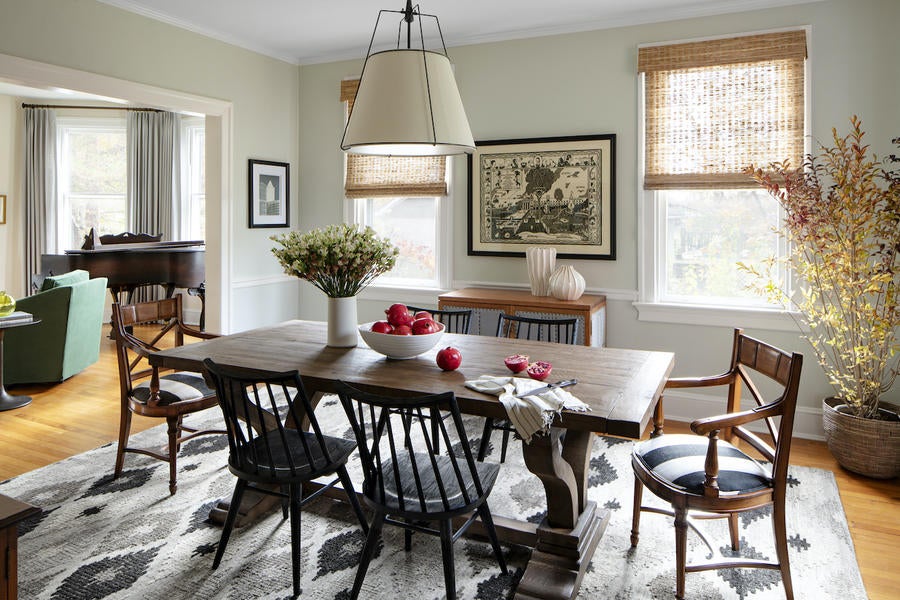
Tell me about your firm—how did that grow and evolve?
I started by myself. I have a business degree, so there’s a part [of me] that loves the business side—but more the entrepreneurial side, coming up with and growing ideas, not so much the financial side. I like to see that we are profitable, but I’m not like, “How much did we make today?”
My husband [Tim Hodges] has worked for different appliance companies in corporate roles like sales and marketing. He enjoyed it, but he was always interested in the projects that I was working on and thought it was neat to see how it all came together. He would look over my shoulder as I was doing budget spreadsheets and be like, “Why don’t you do this? Make a pivot table!” I just wanted to shove my computer toward him and be like, “You do it.” And then two years ago, we were having brunch one day, and said, “What if we did work together? What would that look like?” I do all the design, he does all of the business, and we can stay in our own lanes. It was hard for me at first to let go—I’d been doing it on my own for such a long time, but I had to recognize that things work better as a team.
We decided to open a store together around the same time, coincidentally. He started working with me, and then we decided to buy this building where we could open up a shop and have a studio where we could both have our own offices. Shortly after, we realized that neither of us actually wanted to work in the store, so we hired someone managed the shop, and then in her downtime she also was doing design. We ended up having more design work for her, so we hired a design coordinator, whose main job now is the shop. She’ll help Tim, my husband, with the business side—he tends to do the order placements, tracking, figuring out where everything is for our full-service projects, in addition to bookkeeping. She helps him out with receiving and deliveries, and sometimes with initial planning, drawings and design proposals.
Rolling back all the way, how did you launch your firm?
I officially started my firm in 2016, though I had been doing a few smaller jobs before that. I worked in New York for other designers for a couple years after I got my degree from the New York School of Interior Design—I interned with Jamie Drake and then worked for Thomas Jayne. When I was having my first son, I knew that I wanted to stay home, so I took off close to five years to stay home with my boys when they were young. And then when my youngest was about 3, I started doing a little bit of work part-time. When he was in preschool, I’d run over to the local library and work on projects. The design center was very close to his preschool, which was very convenient, so I could just run over there, source some fabrics, then pick him up.
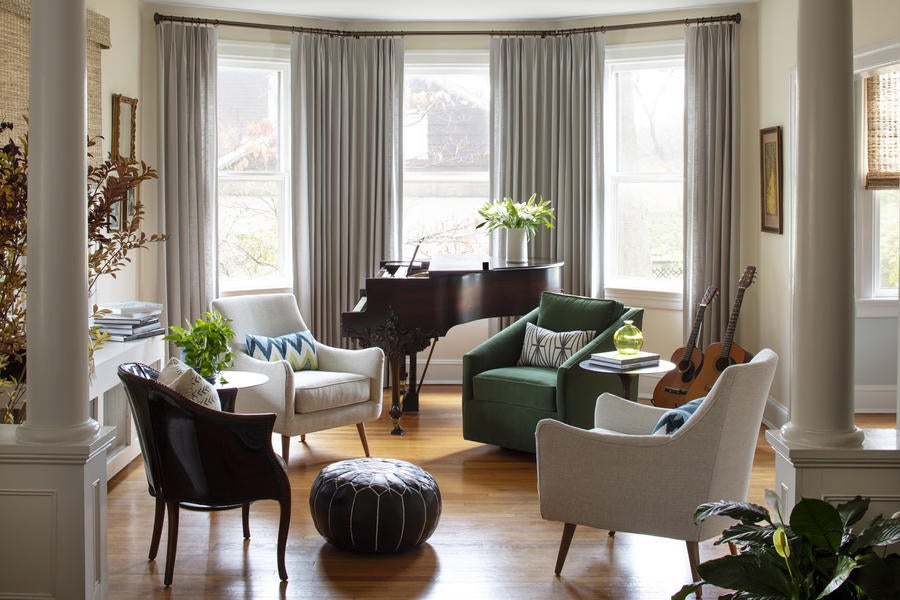
You said you have a business degree–did you go to NYSID right after, or what was the in-between?
The in-between was actually five years working at a marketing company before I realized that it wasn’t quite fulfilling my creative interests. I always knew that I loved art and music when I was in high school, but I didn’t really understand the industry. I really just looked at it more like decorating. So I got my business degree, worked for a marketing company and then started feeling like I wanted to do something else.
I was looking at this online design degree, and the more I looked into it, the more I realized: Wow, this industry is so much deeper than I ever thought it could possibly be. I realized, if I’m going to do this properly, I’m going to get a degree. I mean, you could teach yourself—and there are a lot of amazing designers who have—but I’m the type that needs to get all the information. I really want to know everything. If somebody asks me, “Why did you choose this chair?” I can be like, “It’s this gorgeous Biedermeier that coordinates with the English Regency table you have.” I don’t want to be like, “Because it looks great!” I wanted to have a thorough understanding of the history of design, how to do drawings, and the technical side so that I can do the best possible job.
Did the design school experience live up to your expectations?
It’s funny—the two people that we’ve hired have degrees in other areas. At first, I only looked for people who had design degrees, but I soon realized that just because you have a degree, it does not make you a good designer or a great employee. It means a lot, but it only goes so far—you need to have all these other layers to be the right fit. So [that education] definitely laid the groundwork for me. But you also need that apprenticeship-type situation, which I think is hugely important.
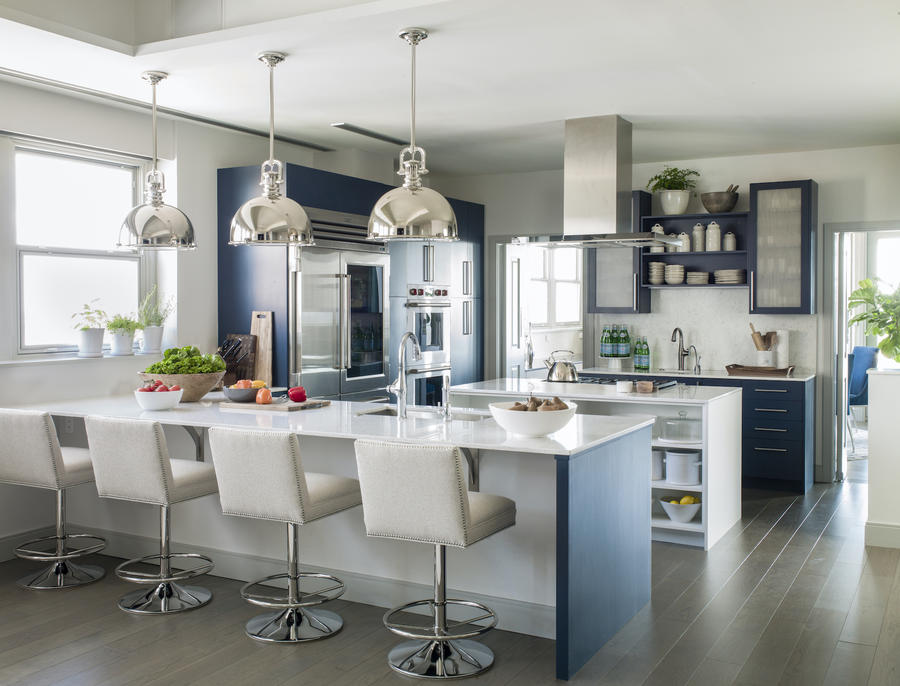
Tell me a little bit about Maryland. How did you land there and start your firm there, and what is the design scene like there?
So originally, I’m from England. My dad’s from Jamaica, my mother’s English, and we grew up going to England, where my grandparents live most summers. We moved to Maryland when I was little and I grew up here. I always knew that I didn’t want to stay in my state for college, and in [the 15 years I spent] in New York, I knew that was the right place for me. I couldn’t imagine leaving—that whole mindset of, “How could you possibly live anywhere else?” And then we had kids, and I was like, “Oh, right.”
That sense of, ‘This is why people leave’?
Exactly. Don’t get me wrong, I still love New York—it was just no longer the right place for me. My parents and brother still lived here in Maryland, so we thought, Why don’t we at least get closer to family? And you know, we wanted a backyard. My son was afraid of grass. He was 18 months old and wouldn’t step on the grass! So when we got here, we had to introduce him to bees and butterflies.
How has it been for your design business, and what types of projects are you working on?
We have a big range. In Maryland, our tri-state area is with D.C. and Virginia, and we’re sometimes a little bit left out of the design scene. When people say Maryland, typically they’re talking about closer to D.C., but I’m closer to Baltimore. There aren’t as many designers in our area, but Baltimore has a great design scene. There are so many amazing people who make awesome products, so we try to have furniture made here. Our shop is full of local makers and artists.
The Washington Design Center is the big design center here, but we tend to do a little bit more local sourcing. There’s a smaller design center closer to us that has fabric, wallpaper and some furniture. They don’t have as much as the D.C. design center, and certainly nowhere near the New York Design Center. When I first came down here, I was like, Where am I going to find anything? But you get used to requesting samples and if something is not available, you look online more. In New York, you didn’t have to do that at all.
I remember when I was interning at Jamie Drake’s office, the designer I was working with asked for a lamp, and I said, “Oh, I saw this one on a website.” And she said, “Don’t show me anything unless you’ve seen it in person.” I can’t say that to my employees, because there’s nowhere to go see it, but I think of [that moment] all the time, because I wish we could go see everything. We normally go down to High Point every six months, and we went to KBIS in January. We try to get out there, because there’s less to source here.
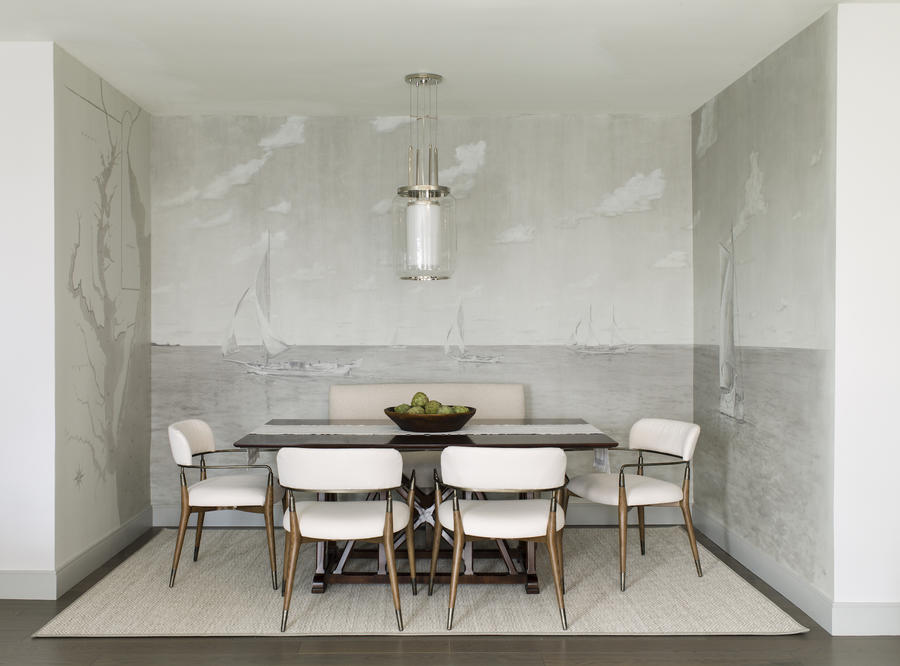
Is that what led you to open your store, Domain?
I think every designer secretly wants to have a store, because we see lovely things all the time and want to give them a home. I [also] love the idea of being able to support people who are making things locally. Almost everything that we have in the shop is locally sourced. We have a lot of artwork from local artists. It’s been such a lovely experience to get to know them all and be able to genuinely say, “Shop local.” Many times, people are like, “Well, I just don’t know where to look, I don’t know who’s out there.” Well, here they are.
We’re always looking for beautiful things for our clients, and often we find amazing things that aren’t the right fit for that particular project or client. Many times when we would source accessories, it was hard to find the right things, because I don’t like to buy the type of accessories where you are buying 20 of something, putting them in a warehouse and then putting one in every bookshelf. We like to get very specific to the client’s taste—some vintage pieces, some antiques, and it was harder to find those finishing pieces here.
Does the shop bring in customers who turn into design clients?
We’ve had a few really good projects come in directly from the shop. The studio is right down the hall, so if somebody comes in, they can talk to us because we’re right there. We put our design boards up on the wall too—huge cork boards with all of our active projects so we can say, “Here’s what your process would look like.” We can show them the materials and finishes, how we work—they get the ins and outs without having to buy in straight away.
We can also source things from Domain. I actually thought at first that that was going to come across as a little weird—to be like, “Here’s a vase that just happens to be from our store,” like I’m just trying to sell them stuff that I already had. But our clients actually asked us to do that. They’re like, “Don’t you have great artwork? Don’t you have linens? Don’t you have all these lovely things?” And I was like, “Well, I do, and if that’s OK with you, I’d love to bring them in.” It took me a second to realize that our clients are probably going to like what’s in the shop if they like what we do. It makes for great client gifts, as well—we always have stuff that we can take over there as a little gift.
You’re a LEED professional. Why was that important to you?
My husband has always called me Captain Planet because I’m a little obsessive about reusing and recycling everything: “What are you using that paper towel for?” So it’s always been important for me. We’re obviously a very materialistic industry, always buying new things or tearing down perfectly good buildings to build a new one that looks more beautiful. It’s hard sometimes to be thoughtful and responsible about what we’re doing, so I felt like I needed to get some training in that. I wanted to make sure that I knew what I was talking about and not just saying, “Well, we sourced this from this person [who says it’s sustainable], but we don’t really know what all these acronyms mean.”
A lot of the LEED program has more to do with the architecture of the building, which is why I [also got certified through] the Sustainable Furnishings Council’s green leadership program. That’s more about how furniture is made, which sometimes gets a little left out in this sustainability conversation with so much furniture made overseas where the standards are so different.
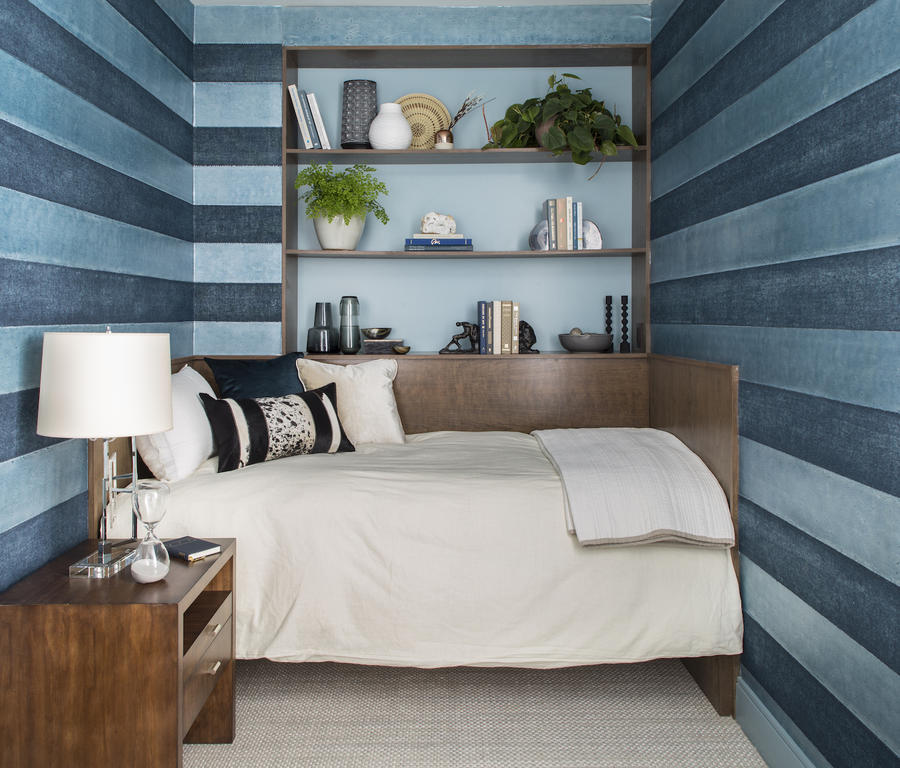
Do you think there’s progress being made in the realm of sustainable furniture production and consumption?
It’s hard, because there’s so much competition in the pricing. How do you get something that’s well-priced, well-made, and also sustainably made? There’s not a lot of auditing that happens in terms of how everything is being sourced, so it’s hard to know—even companies like Crate & Barrel and Pottery Barn, they say that they use FSC-certified wood, but the [Forest Stewardship Council] doesn’t really audit that much, so how do we really know what we’re doing? We can only do our best, of course, but I think that the furniture side of things still has a long way to go in terms of making sure that we’re being responsible.
With sustainability in mind, what are the parts of that process you prioritize?
We try to source a lot of vintage pieces. We also work with our clients to donate anything they’re not using. Last year, we worked on this law office project. It was an office full of lovely traditional furniture—leather boardroom chairs, mahogany tables—and they really wanted to go super-modern. I was like, “That’s cool, but that means we can’t really keep any of this furniture.” Those tufted leather chairs looked like they were from 1992, but they were in great condition.
We also work with a local children’s home on the side when they have various design issues—we’ll help them if they’re having an event. So we talked to the law firm and arranged for them to donate their furniture to the children’s home. They didn’t care that they were tufted leather chairs from the 1990s, they were very happy with them. And it looks great, you know? But that’s also sustainable, because nobody would buy this stuff. It would have just gone to the dump.
We also try to donate cabinetry and appliances. Those custom stairs that I was talking about earlier, we recycled all of the old steel from the staircase that came out. And it helps to be able to say that we can do that for clients. Not all of our clients value it in the same way—I mean, I think they value it, but I don’t know that it’s top of their list. But I do think they always appreciate it.
Do you just say, ‘By the way, sustainability is part of our process’?
Yes. We definitely use it as a selling point. But it’s also like, “If it’s not important to you, we’re not going to harp on it, but we’re going to do it anyway.” When we talk to clients, so many times it’s just that they don’t know what the options are. The loft that we did recently, we had a local nonprofit that took all the cabinetry, appliances, doors, everything. Nothing really went to the trash except for drywall. And the client, I don’t think they were even aware that could happen. It’s not that they don’t care and don’t want to, it’s that they don’t necessarily realize how to do it.
Did getting those certifications change your approach to projects or sourcing?
You start to learn about how companies try to manipulate things. They’ll say that they’re “green,” but then when you see why they say that they’re green, it’s like, That’s not green, you’re doing that for cost savings. If you’re doing it for the sustainability side of it, you would carry that [sensibility] through. You wouldn’t use these high-VOC finishes on your furniture.
We’ve found really amazing craftspeople who make amazing wood furniture in this country. It’s made within 500 miles—that’s one of the sustainable things for LEED certification, so that’s great. It’s made with rapidly renewable wood. That’s awesome. And then you’re checking off all the list with all the things, but then it’s insanely expensive—or you don’t even like it. Once you narrow it down to who’s truly sustainable, good luck finding something that actually fits your project.
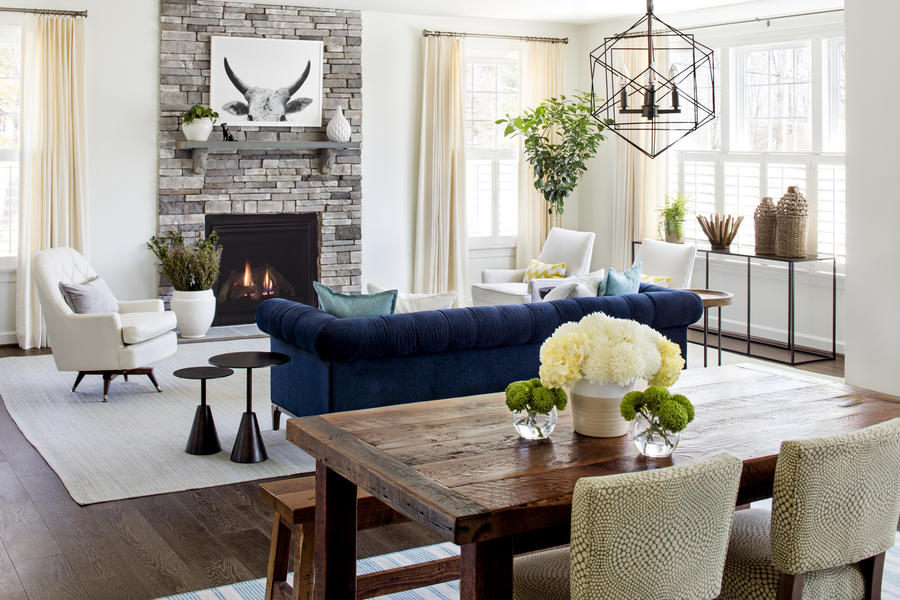
Where do you see the opportunity to grow? What are you most excited about in the year or two ahead?
We are knocking on some wood here. We have been lucky to stay busy—we just signed a new project yesterday, actually. I love designing furniture, so we’re hoping to be able to expand that way. Licensing might be interesting, or developing our own line, but furniture is a hard thing—especially because of all the sustainability challenges. I can get on my high horse about this stuff, but then you see the reality of it and you understand that it costs an arm and a leg to get the right type of wood, the right person to do it, all these things. You add up all these costs and suddenly your chair is $9,000. But anything that we make or support should fall into line with all those values. We don’t want to have things just for the sake of having them. It really needs to fit into who we are, which is hard.
How do your clients find you?
We have a lot of repeat clients, which is fantastic. New clients [often find us by referral or sometimes through press coverage]. We’ve been lucky to get a decent amount of press, as well—we were on House Beautiful’s Next Wave and Traditional Home’s New Trad in the past year, so we’ve had a decent number of people come to us through that. And then the shop is a big draw as well.
What is the impact of the press? Is that immediate?
It’s nice to have the added layer of appreciation from an objective audience. It also helps us with pricing—to be able to show that we’re not just some design firm down the street, that we actually have some credentials to our name. It is hard sometimes for people to understand how much work and detail goes into these projects.
How do you approach pricing?
We charge hourly. We explain that we do two different types of projects—full-service where we do it all for you, or design-only, where you [take our vision and execute] it on your own. Because not every client needs to be a full-service client and some people are going to have an amazing design but want to do it themselves. We talk about price and budget right away—most of the time people say that they have no idea what their budget should be. If they’ve worked with a designer before or have had multiple homes, they tend to know more about what they want to spend. But honestly, I have clients and they’re just like, “I don’t know. Do what you think is best? Just don’t break the bank.” But what does your bank look like?
It’s hard to know sometimes what they’re expecting, but they’ll always set us right. We might show them something and they might say, “That’s not quite the budget we were hoping for.” By the time we’re presenting a project, if they say, “Oh, it’s too expensive,” we haven’t done our job at all. We certainly get to that conversation way before that. We had a client recently who said, “I have no idea what my budget is.” And we started talking and about half an hour in, she was like, “I don’t think I’m going to feel comfortable spending more than $100,000,” and I’m like, “OK, so you do have a budget. Then we need to prioritize what you actually want to do. Because $100,000 isn’t enough for what you want.” So we have that conversation as soon as possible, because it makes it more efficient for sourcing. Like, can we even design custom furniture? Is there any point in going down that path of explaining some element of design that I know is going to cost more than what they’re willing to spend?
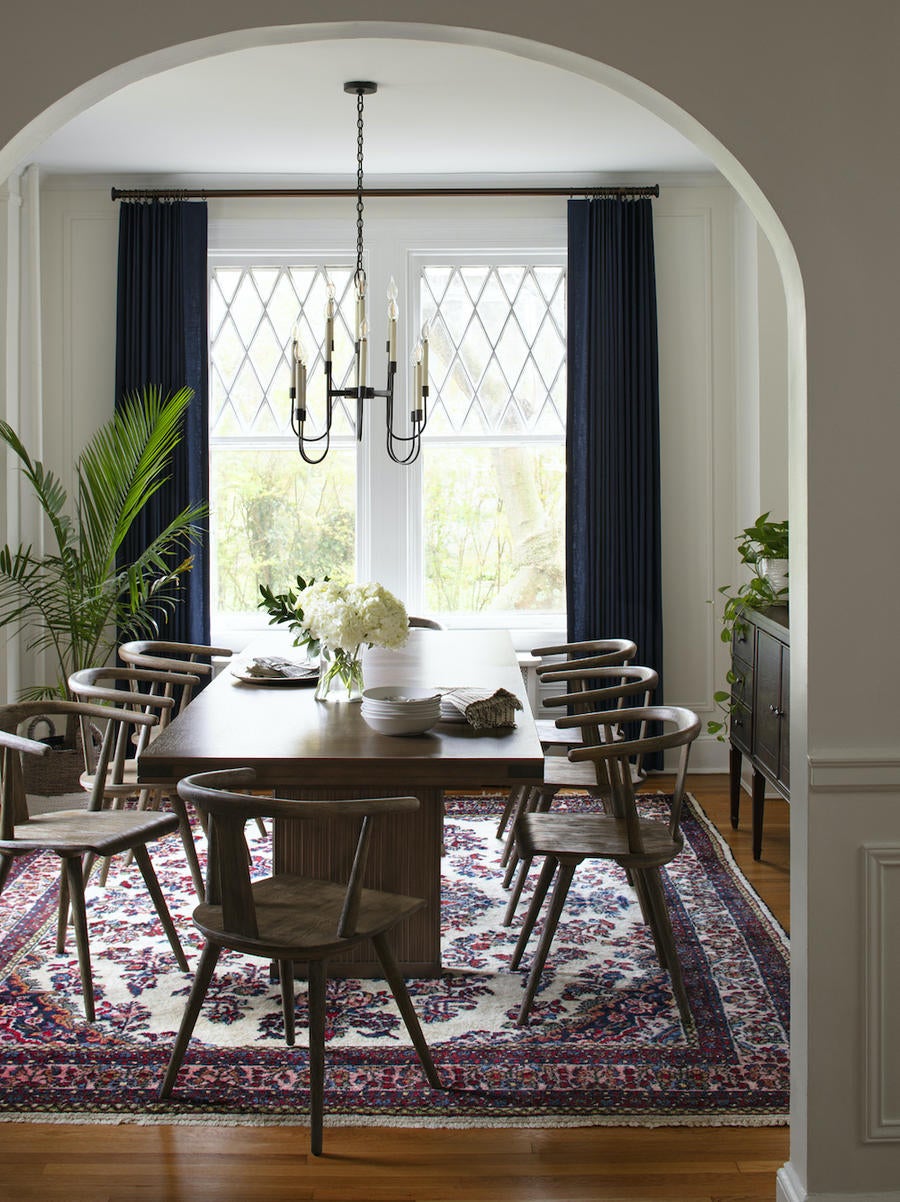
Did the time you spent working for Jamie Drake or Thomas Jayne influence the way you approach budget?
I was so lowly at Jamie’s office, I was only in on a few meetings with clients to even hear that conversation, and the numbers that I was hearing were nowhere near what my brain would even comprehend. But I knew that it was really important to be up front about the cost, because the type of people I wanted to deal with are in the position they’re in because they’re OK with talking about money.
How do you feel talking about money?
I still hate having that conversation. I don’t mind talking about their budget, but I hate talking about how much I’m going to cost, because there’s always that weird situation where you’re like, “I deserve this! I do! I’m good, I know what I’m doing!” But at the same time, I just want to do as much as I possibly can for them—I want to make them happy, I want to make sure that they love their home, and I want to make it affordable for them, so it’s really hard to say, “I’m so sorry, but in order for me to do my best work, it’s going to cost this much, and you already said that you don’t want to spend that much.”
We used to always take on many more projects than we should, and I’ve been able to pare that back a lot and tell people, “Here’s how much a design with us is going to cost. We might not be the right fit for you, but here’s somebody else who is.” I always refer people. I try not to ever just tell them, “We’re too expensive for you.”
As you grew the firm, and as you have to support more people, how did that change the kind of work you took on?
It’s given me a better sense of our value and what’s worth our time. There are only so many projects we can work on. There’s only so much work we can do in a day as human beings. Yes, you can sell product as well, and there’s more flexibility there in terms of profits, but still, there is a limit to how much we can actually work and how much we can charge for. It helped to actually have employees, because being able to look at somebody else’s hours makes you stop and think, “I’m paying you this amount of money, so I need to be bringing in this amount of money to make it worthwhile to have you working on this.” It’s one thing to be able to write off your own hours, to say, “I’ll just work on this a bit longer—I’m just watching TV while I’m drawing the picture, let me keep going.” Once it’s somebody else’s time that you’re paying for, you’re suddenly much more aware of that.
And then also when my husband started working with me, I [became] more aware of how my time was being spent, because it came down to this: I’m a “billable asset” versus his side of things—which are extremely valuable, but he’s not literally billing for his time. He’s doing the work that needs to be done, growing the business. But the work that I’m doing, we can literally say to the client, “Here’s a bill for it.”
Does that change a lot in your home life?
It did! It’s funny, it’s very practical. It actually made life a little easier. Because he had more of that financial mindset, he was the first one to say, “I should go pick up our son from school, because you’re working on a project and you’re billable.” I mean, if I don’t do this, we’re not going to get paid. We have to do all the other stuff too: We have to grow the business, we have to support the business, but we also have to do the business. So the pressure’s there. We can joke about the fact that my husband usually makes dinner every night, but there’s also that pressure of: If I’m not doing my part, then who’s going to do it?
To learn more about Laura Hodges, visit her website or find her on Instagram.
Homepage photo: Laura Hodges | Courtesy of Laura Hodges Studio





























